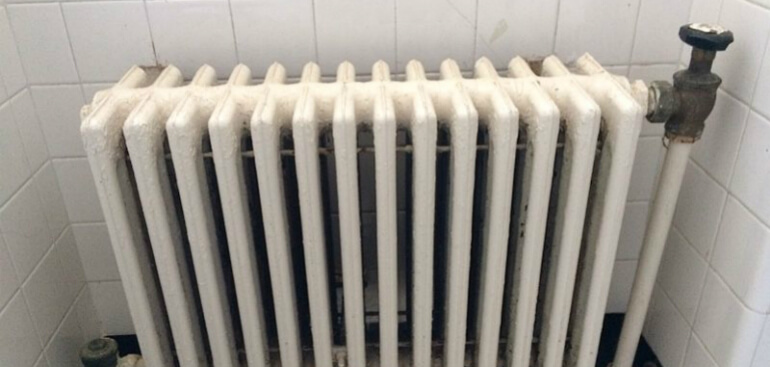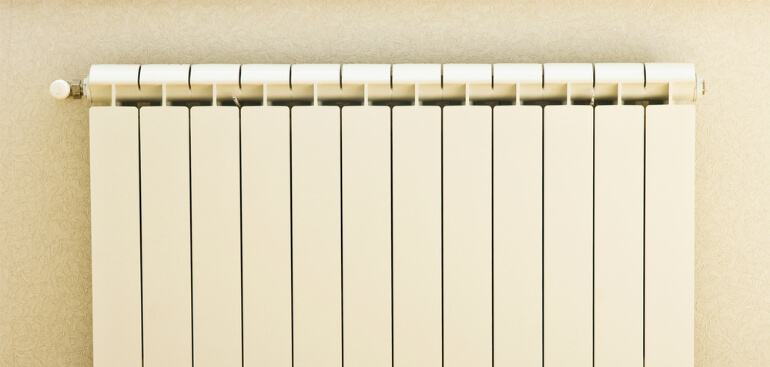Answer these simple questions and we will find you the BEST prices
Which type of solar quotes do you need?
It only takes 30 seconds
100% free with no obligation

Get up to 4 quotes from our selected suppliers by filling in only 1 form

Save money by comparing quotes and choosing the most competitive offer

Our service is 100% free and with no obligation
- GreenMatch
- Blog
- Central Heating Radiators
Central Heating Radiators
Introduction to Central Heating Radiators
One’s choice of a central heating system depends on a number of factors, the quality of pipes that the coolant mix will be passed through is one of these. Despite the central heating system’s type, be it a heat pump or boiler-based, the radiators are the ones that will have a final say in how well your property is being heated.
The Radiator’s Functioning Principle
As you might know already, central heating radiators or heat convectors are specially designed heat exchangers that generally consist of individual column sections, which are connected to each other through a network of internal channels.
The radiator’s main purpose is to transfer thermal energy from one medium to another, by circulating a hot fluid through the exposed pipes, which acts as a heat transfer agent. The more rooms in your house, the more radiators are needed. Therefore, this fact impacts the central heating installation cost.
The process of heat emission behind the functioning of a radiator is based on the principles of heat radiation, convection and conduction. It is worth mentioning that the share of heat release that occurs through radiation can be increased by painting the radiator in black. To enhance the radiators’ energy efficiency, it is recommended to place heat-resistant reflectors between radiators and exterior walls to help retain heat in a room.
Radiators Types
In order to help you decide on the radiator’s type which will suit your central heating system, we considered that it would be adequate to present a short description of radiators types currently available on the market, so you could have a better understanding of these before purchasing one.
Cast Iron Radiators
Cast iron sectional radiators are designed for residential, public and industrial buildings heating systems. They are quite compact and have a considerable heat capacity per unit of length. The good thing about these radiators is conditional on their limited susceptibility to poor quality coolant and on their capacity to withstand corrosion, which makes them strong enough in order to last decades of constant work. On one hand, their significant mass creates certain difficulties during the installation process, but on the other hand it provides a high heat capacity rate, allowing for the room’s heat adjustment even when there are substantial temperature disruptions. Cast iron radiators require periodic painting in order to extend their life cycle, that is very much impacted upon by the fact that internal channels walls are rough and porous, which eventually leads to the formation of plaque and decrease in heat efficiency.

Aluminium Radiators
Aluminium radiators are considered to be the most effective in terms of heat emissions they have to offer, mainly due to the aluminium’s high thermal conductivity properties, which are further enhanced by the radiator’s specific designed edges and ledges. Virtually, all modern aluminium radiators are engineered to withstand working pressures of more than 12 Atm (atmospheres).
The advantages of using aluminium radiators, would include the radiators’ lightweight and small size which makes them easy to install, and the fact that these radiators can work at high pressures, providing a maximum level of heat transfer. A significant disadvantage of aluminium radiators is their sensitivity to corrosion, particularly when it gets in contact with water, which may be accelerated by the presence of stray voltage currents in the heating system.

Aluminum is an active metal, and if the surface of the oxide coating film that covers the inside walls is damaged, then at the contact with water the oxide layer decomposes releasing hydrogen. Such scenarios might prove dreadful, whereas the buildup of pressure, due to growing amounts of hydrogen, can lead to cracks into the radiator.
Steel Panel Radiators
This type of radiator consist of two steel sheets with stamped depressions that are welded together. Steel radiators are available in different sizes, which allows the manufacturer to produce radiators with different heat outputs. These radiators weight little and have a small depth, which makes them perfect for small space rooms. The radiator’s heating surface stimulates an intense movement of hot air, the proportion of the heat flow transferred by convection reaching 75 percent.
The radiator panels are made of low carbon steel, which possess high corrosion resistant properties. The panels surface is phosphated, coated with enamel powder and heated at high temperatures. All these processes aim to prolong the durability and reliability of the steel radiators.'
Fill in the form in just 1 minute
We strive to connect our customers with the right product and supplier. Would you like to be part of GreenMatch?





